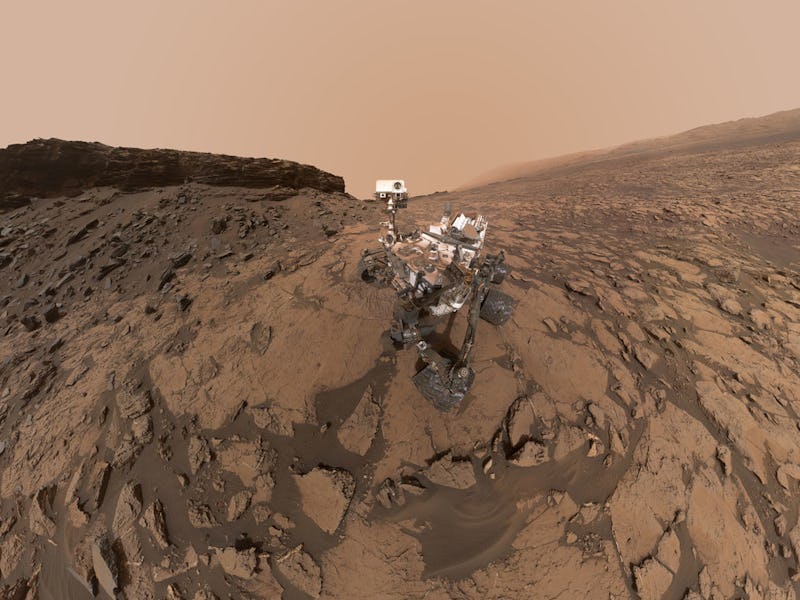Curiosity Rover Might Just Explore Mars Forever at This Point

Curiosity was originally only going to study Mars for two years, but the brave little rover just kept on keepin’ on, and earlier this month it embarked on the next stage of its extended mission exploring the red planet.
The scope of the NASA rover’s mission has expanded drastically since it landed on Mars in 2012. What was once a two-year jaunt has become an indefinite journey of discovery. NASA approved Curiosity’s second extended mission earlier this summer, and on October 1, the rover started that voyage by beginning to scale Mount Sharp.
The mountain, which NASA says is a “Mount-Rainier-sized” mound, is nearby Curiosity’s previous haunt, the scenic “Murray Buttes.” Curiosity’s new, two-year task is to explore various layers and ridges searching for insights into Mars’s water-rich history.
“Curiosity’s assignment is the ongoing study of ancient habitability and the potential for life,” Curiosity program scientist Michael Meyer said in a NASA press release.
“This mission, as it explores the succession of rock layers, is reading the ‘pages’ of Martian history — changing our understanding of Mars and how the planet has evolved,” he continued. “Curiosity has been and will be a cornerstone in our plans for future missions.”
Curiosity is going to head off to a ridge about a mile and a half away from its current that NASA says is “capped with material rich in the iron-oxide mineral hematite,” and after that, it’ll head to some clay-rich bedrock. Both locations likely formed in a wet environment, and by traveling uphill to drill and study them, Curiosity should be able to determine how old ancient Martian lakes reall were.
“The more vertical thickness we see, the longer the lakes were present, and the longer habitable conditions existed here,” Curiosity project scientist Ashwin Vasavad explained. “Did the ancient environment change over time? Will the type of evidence we’ve found so far transition to something else?”
Curiosity has already discovered that Mars used to have water and contains the chemicals that would be necessary to theoretically create life as we know it.
Mount Sharp as seen by Curiosity in 2012.
NASA plans to continue to use Curiosity for as long as they possibly can, at this point. With a little luck, it’ll still be functioning when it’s joined by a buddy rover in 2020. One NASA administrator, associate administrator for science John Grunsfeld, says it could have power for another 55 years.
“Even after four years of exploring near and on the mountain, [Curiosity] still has the potential to completely surprise us,” Vasavad said.
Godspeed, Curiosity.